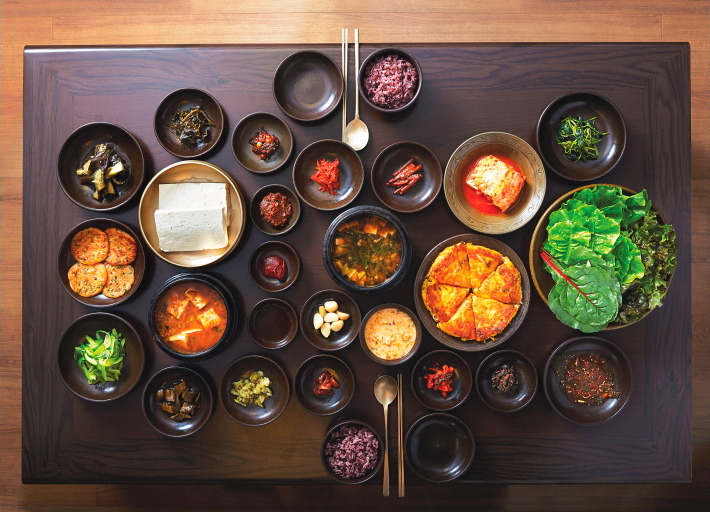UNITED STATES—A few weeks ago, I was waiting at a traffic light, counting down the seconds until I could accelerate, when an elderly woman crossed the street in front of me. Her gait was slow but steady, and her feet were encased in sturdy shoes. Her clothes, dark pants and a light pink blouse, hung off her frame. One hand clasped the other behind her back as she moved. Her curly, cropped hair gleamed silver in the sun. I immediately thought of my grandmother, who once walked everywhere if she could help it, in exactly the same manner: slowly, with her hands behind her back, sure of where she was coming from and where she was headed.
Memories are funny creatures. They emerge when we least expect them, triggered by a sight, scent, sound or something someone says. The image of the woman crossing the street, so similar to that of my halmeoni, stayed with me for hours. I thought of the early years of my childhood when she fed, cleaned, and entertained me while my parents worked. I remembered how she lived in the kitchen for hours on end to make our favorite dishes, even if they were the same foods we had eaten for years.
When I lived in Koreatown, I only had to open the door to smell all kinds of tantalizing Korean dishes being cooked throughout the apartment complex. I could pinpoint the smells I grew up with: the overpowering smell of kimchi stew, the deep notes of braised short ribs, the nutty fragrance of sesame oil. Even now, these smells are comforting; they conjure thoughts of my family and where I come from.
Home is where the heart is, but it’s also where the food is. Regardless of where I am, the food of my childhood will always bring me back to my roots. Recently, I got to thinking about how comfort foods carry different meanings for everyone. They may evoke touching memories, ease homesickness, or lift bad moods during challenging days. As for myself, they do all three, depending on the day and mood.
What dishes do we turn to, time and again, for comfort? Maybe it’s a bowl of chili, pasta in a creamy sauce, or a simple ham and cheese sandwich. I would say, without hesitation, Korean food wins for me every time. I crave it after a trip away, when I’m sick, or when I plain miss my grandma’s cooking. I’d like to share some of the dishes I grew up with that I enjoy to this day.
Main Dishes

If I had to choose, I would pick spicy over non-spicy food any day. I sprinkle hot sauce over many savory dishes, and a bottle of Sriracha is always in my refrigerator. Needless to say, kimchi jjigae is one of my favorite Korean comfort foods. I’ve eaten it ever since I could handle spiciness, and it’s still my go-to at restaurants.
Kimchi is made from fermented cabbage and a variety of seasonings, and jjigae means stew. The dish is laden with ripened kimchi, diced tofu, scallions, onions, red chili pepper flakes, and gochujang, red chili paste. Variations can include pork, beef, or my favorite, tuna. Once boiled, the stew thickens and is ready to be enjoyed with a bowl of rice.
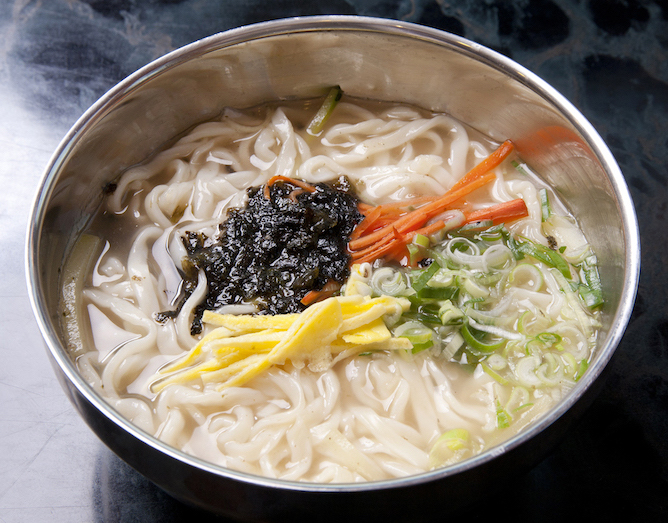
Noodles are convenient and filling, yet easy to digest. I prefer noodles to rice, and fortunately, there are many Korean dishes that utilize noodles. During the winter, I turn to kalguksu, which translates to “knife noodles.” Handmade flour-based dough, which can be customized with mugwort or mung beans, is rolled out and cut into long strips with a knife. Broth is made using chicken, dried anchovies, kelp, or shellfish. The noodles are boiled with Korean squash, scallions, and onions, and seasoned with salt and black pepper. Seafood, chicken, and kimchi are common additions to the broth.
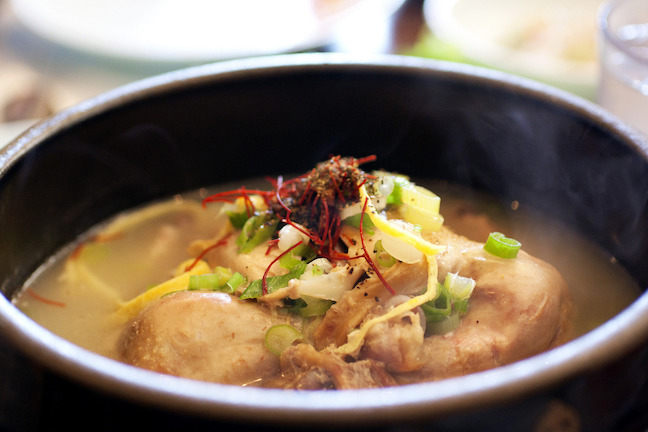
Every time I feel under the weather, I crave samgyetang, a hot soup made with ginseng and a whole young chicken. The chicken is stuffed with glutinous rice, garlic cloves, and jujubes, and boiled with ginseng, scallions, onion, and chestnuts and gingko nuts if desired. The dish is served with salt and pepper on the side to season the soup and dip the chicken in.
One might think warm and hearty chicken soup would be eaten in the winter, but this particular soup is traditionally consumed during sambok days, the three hottest days of the year that usually fall in July and August. The dish is believed to balance body heat and raise energy levels.
Side dishes (Banchan)
The term banchan refers to small side dishes that are served alongside main dishes and bowls of rice. Common banchan include kimchi; namul, various steamed or stir-fried vegetables; jorim, food simmered in a savory sauce; and jeon, pan-fried, savory, pancake-like dishes.
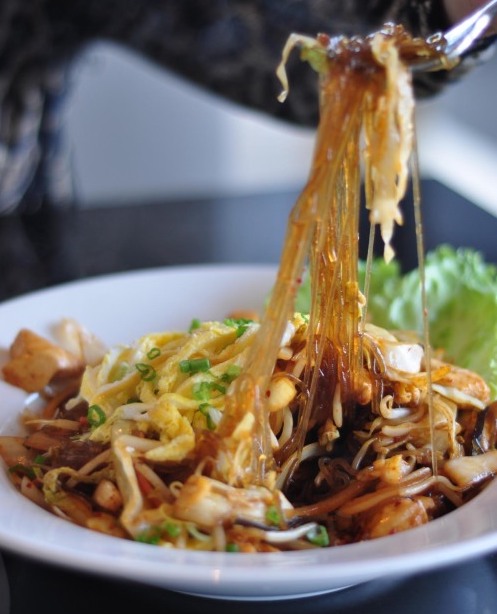
Japchae, sweet potato starch noodles mixed with thinly sliced vegetables, is one of the most popular side dishes served at restaurants. My grandmother made it often, and it remains one of my favorites. Thin slices of carrots, onions, bell peppers, and mushrooms are stir-fried individually, and combined with noodles, known as dangmyeon, strips of cooked egg, and blanched spinach. The mixture is seasoned with soy sauce, sesame oil, and sugar. I love the complex taste of this dish, but I may love its rainbow of colors even more.
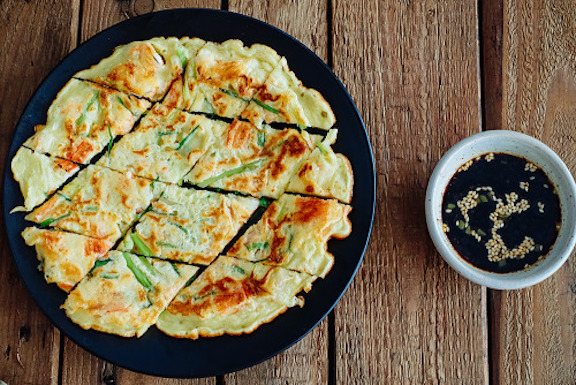
I believe it’s true that greasy foods are sometimes the most comforting. My grandma had many dishes she could make with her eyes closed, but jeon are probably her signature dish. They are made with flat pieces of meat, fish, or vegetables, which are coated in flour and egg or a batter of flour and water, then pan fried. I adore all kinds of jeon and make a beeline for them every time, but my all-time favorite is the classic pajeon, or scallion pancake.
The dish is relatively easy to make; scallions are cut into long pieces and placed onto a greased pan, and a batter of flour and water is poured over them. The pancake is flipped once browned and crispy, and cooked until the other side is also browned. It is typically served with a mixture of soy sauce, vinegar, and sesame seeds. Other delicious variations include seafood (haemool pajeon) or kimchi.
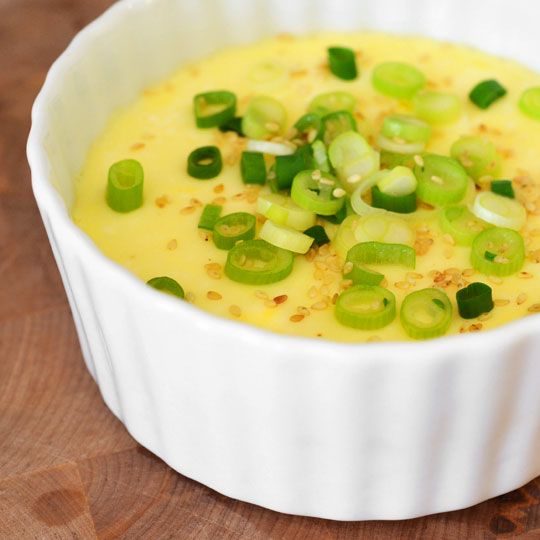
Gyeran means “egg,” and jjim means “steamed.” Gyeran jjim, or steamed egg, is one of the simplest side dishes with minimal ingredients. Eggs are beaten with sliced scallions and simmered in an earthenware pot with water, anchovy broth, or chicken broth. The mixture can be seasoned with salted shrimp, fish sauce, or salt and pepper. Diced mushrooms, onions, squash, or carrots can be added for another twist. The resulting eggs have a texture similar to custard and can be eaten with a spoon. For added convenience, this dish can be made in the microwave within minutes.
Snacks and Sweets
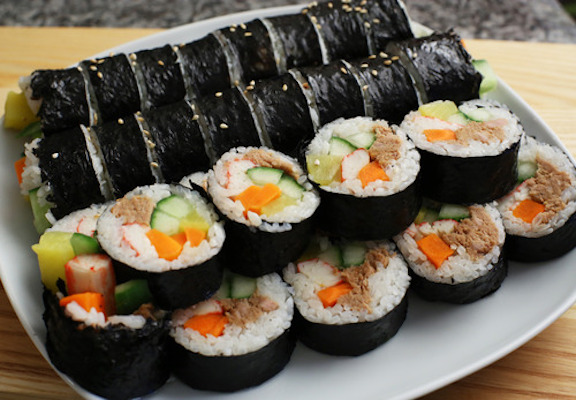
Gimbap is made with cooked rice, meat, and vegetables rolled in gim, dried seaweed, and sliced into pieces. This dish is highly customizable, with variations including tuna and perilla leaves, kimchi, Spam and cheese, or fish cake. More traditional gimbap recipes include beef, julienned carrots, cucumbers, spinach, eggs, and danmuji, pickled radish. The bite-sized pieces are convenient for picnics and outdoor events.
When I was too young to appreciate vegetables, my grandma would make ggoma, or child-sized, gimbap with plain white rice and strips of egg. Throughout high school, whenever she asked me what I wanted to eat, I would request these simple but addictive snacks.

It’s no secret that I have a sweet tooth, and hotteok, a filled pancake made with flour, water, sugar, and yeast, is one of my favorite Korean treats. The dough is formed into balls and filled with a mixture of brown sugar, nuts, and cinnamon, and then pressed flat onto a greased pan and cooked until golden brown. The filling melts into a warm syrup, which oozes out with each bite. These days, hotteok mixes can be found at Korean supermarkets for our convenience.
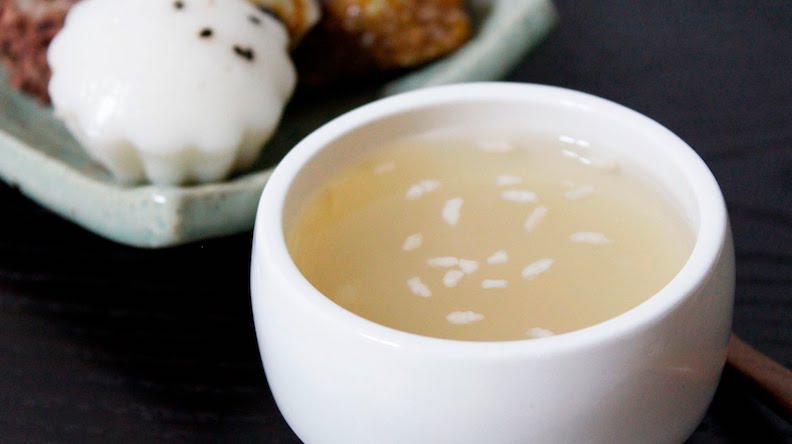
I don’t often drink sweetened beverages, but sikhye is another story. The traditional Korean beverage is made with barley malt powder, water, rice, sugar, and pine nuts. Barley malt powder is steeped in water for a couple of hours, and the clear liquid that rises is poured over cooked rice. The mixture is kept warm for hours, until grains of rice float to the surface. The rice is strained out, and the remaining liquid is boiled with sugar to taste. After the mixture is cooled and chilled, it can be served in cups with reserved rice and pine nuts. The result is light and refreshing, and is believed to aid in digestion.
The walk down memory lane is always bittersweet. But one thing remains the same: I have received and experienced love in many ways, through communication and expression, and through meals lovingly prepared by family. Sentimental or not, I still believe food is one of the many ways we relate and bond, and learning more about our heritage and cultures is always welcome.

